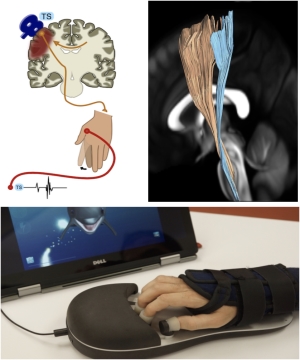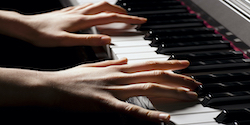Dissecting hand dexterity for effective rehabilitation
The human hand possesses a rich repertoire of dexterous movements, much of which can be lost after stroke. In a recent comprehensive review on selective finger control (Xu et al., 2024), we argue that selective finger control is a converging product of evolution, biomechanics, and neurobiology. This convergence has given rise to the increased flexibility and versatility in human hand control, forming the foundation for our complex motor and cognitive skills. Our previous work (Xu et al., 2017)showed that most patients never fully regained hand dexterity despite substantial recovery of hand strength, and that separable descending neural pathways support finger dexterity and strength. These findings highlight the critical need to specifically target hand dexterity in rehabilitation, as the hand function relies heavily on the dexterous component. In this project, we investigate behavioral and neural mechanisms of hand dexterity, its impairment after stroke, and key factors for recovery.
Direction 1: Neuromechanic mechanisms of hand dexterity before and after stroke
We have developed a sensitive device to track very subtle finger forces in 3D (Carducci et al., 2022) and a set of new paradigms for finger control in more ecologically valid tasks in virtual 3D. Using this device, we can dissect and compare different components of finger dexterity. We showed that loss of finger control complexity and intrusion of flexor bias contribute to finger individuation impairment after stroke in different ways (Xu et al., 2023). We also demonstrated altered 3D spatiotemporal structures in finger-selective control in stroke patients, which manifest as reduced finger coordination characteristics unique for each person and each task (Ihejirika et al., 2024, 2025). Additionally, finger individuation and precision grip operate on different motor control mechanisms and closely interact in complex manipulation tasks (Bryd et al., 2025).
In this project, we aim to directly compare finger individuation and precision grip, two traditional paradigms that have been used as proxies for hand dexterity. We strive to answer the questions of 1) what the critical biomechanical motor control principles for hand dexterity are, 2) what brain pathways support these components, and 3) how they interact in learning and rehabilitation. To answer these questions, we also utilize brain imaging of high-resolution diffusion imaging and tractography method (Rai et al., 2025), as well as brain stimulation using transcranial magnetic stimulation (TMS).

Direction 2: Rehabilitation strategies for hand recovery
We also trained a cohort of chronic stroke patients with a piano-keyboard-like task and showed that patients improved their finger individuation ability after one week of training. We thus aim at designing effective training tasks for patients to improve all components of hand dexterity (Marase et al., 2020).

 Back to research
Back to research
